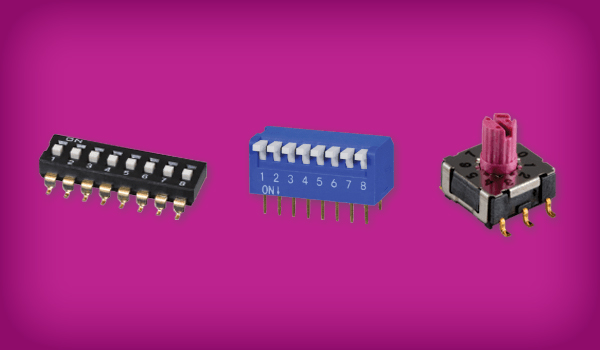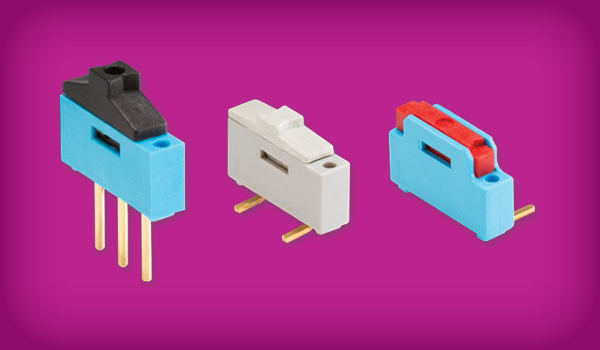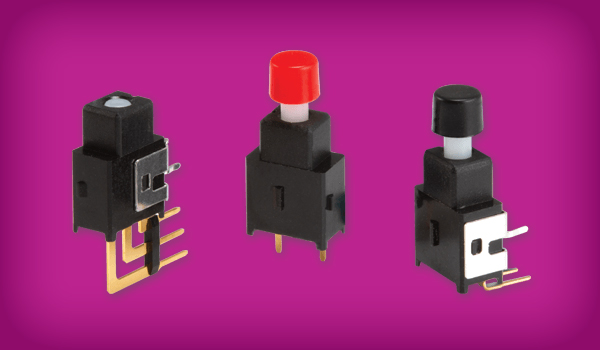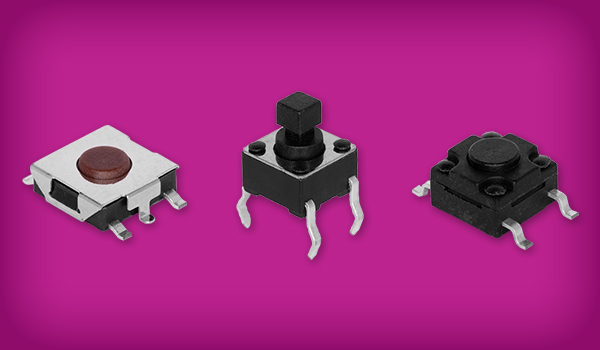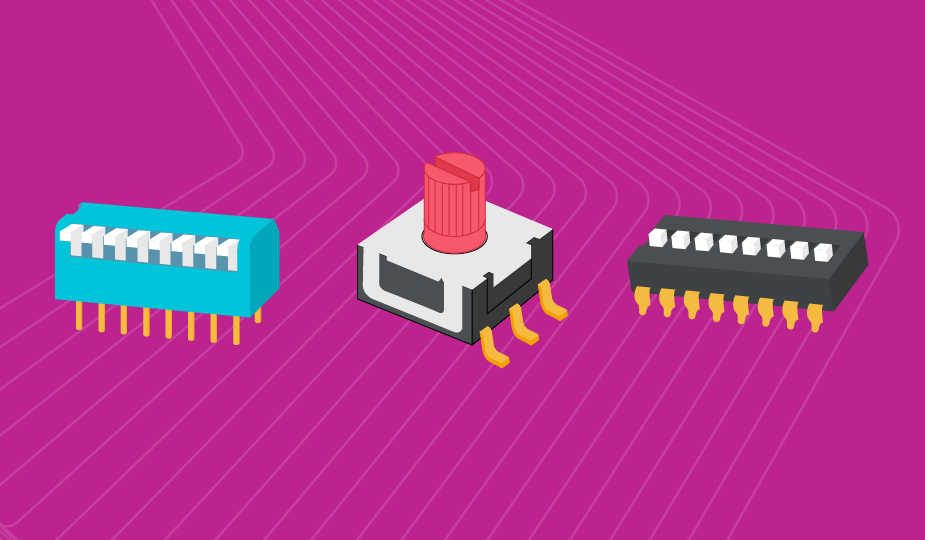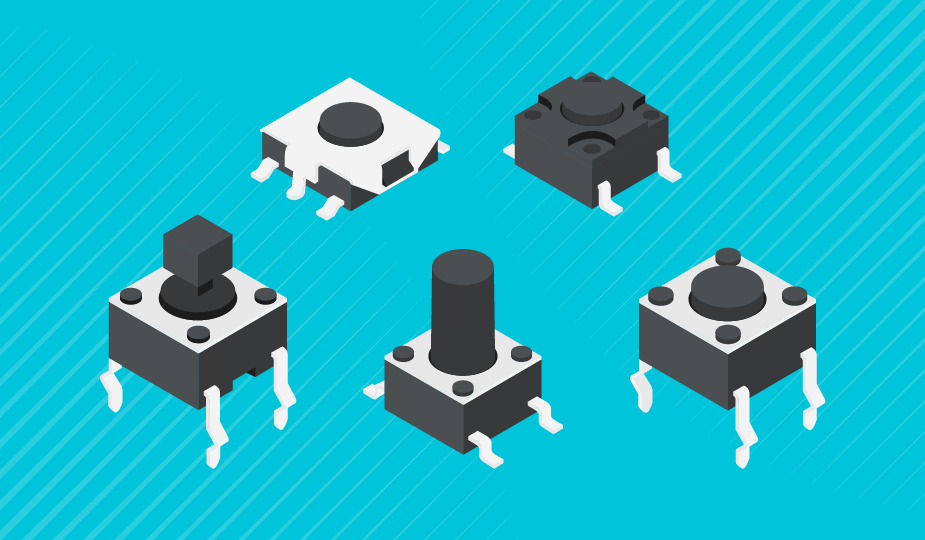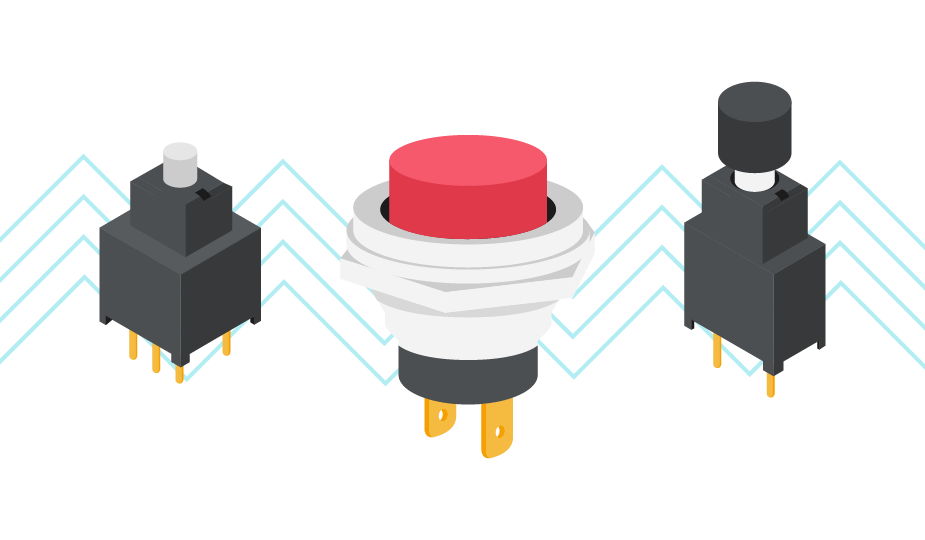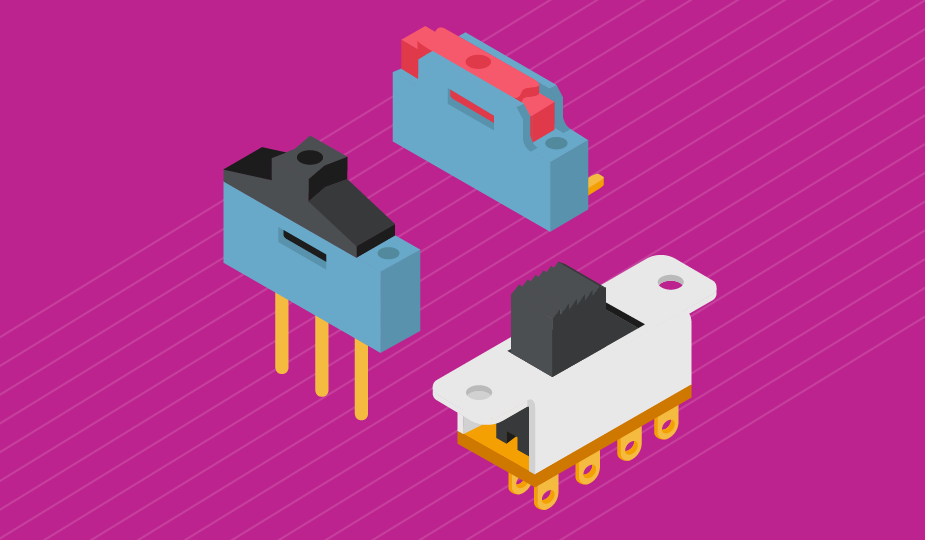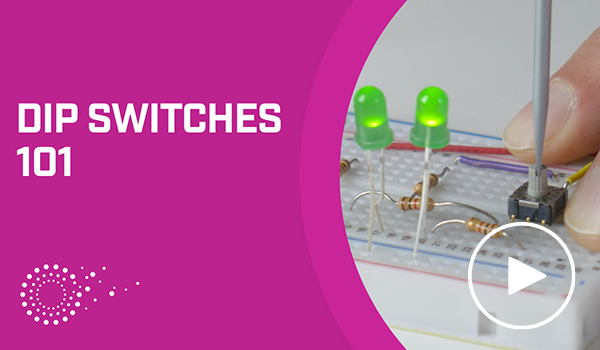Fundamentals of Switches
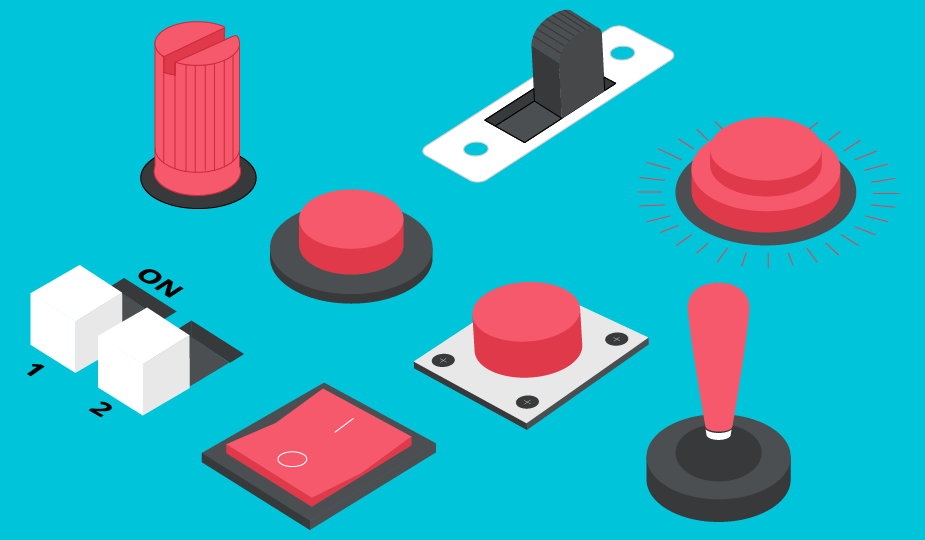
Switches are not only prevalent in every aspect of daily life, but they are also nearly as diverse as they are numerous. Besides the basic differences between mechanical or electrical operation and manual or electronic actuation, there is a nearly endless variety in size, shape, inputs, outputs, interfaces, and features. From switches barely large enough to see with the unaided eye to switches too large to move without specialized equipment - the options may seem endless. While all switches have their strengths and weaknesses, at times, the only true difference between using one type of switch and another is the aesthetic and the user interface style desired. Yet with a foundational understanding of the different switches available, a product designer can make informed decisions on what will not only work best in form but in function.
Electronic switches that are based on BJTs, MOSFETs, IGBTs, or other semiconductor designs are becoming more popular due to decreasing costs and increasing features. However, they are still not the ideal solution for the majority of switching applications, and switches that rely on mechanical contacts opening and closing still dominate the market. Besides the operation, switches can be actuated, changed from one state to another, either manually or electronically. Manual actuation is most often done by a physical operator whereas electronic switches typically operate based on pressure, temperature, time, or any variety of sensor inputs. To reduce the scope of this switches topic to a manageable level, physically operated and actuated switches will be the focus of this post. Shop CUI Devices' full range of switches.
SPST, SPDT, DPDT, and More
Any discussion about switches will require an understanding of poles and throws. In short, poles indicate how many circuits a single switch can control. Throws, on the other hand, indicate how many contacts the switch can choose between. This concept is best understood with simple illustrations.

As seen with a switch with only a single pole and a single throw, conveniently called SPST, there is only one circuit that can be controlled, and the switch only opens and closes a single contact. Compare that to a switch with a single pole but a double throw, SPDT.

In the SPDT switch, there is still only one circuit to be controlled but the switch can change between two different contacts. With an SPDT switch, there is no restriction to simply open and close a circuit but to instead redirect the circuit.
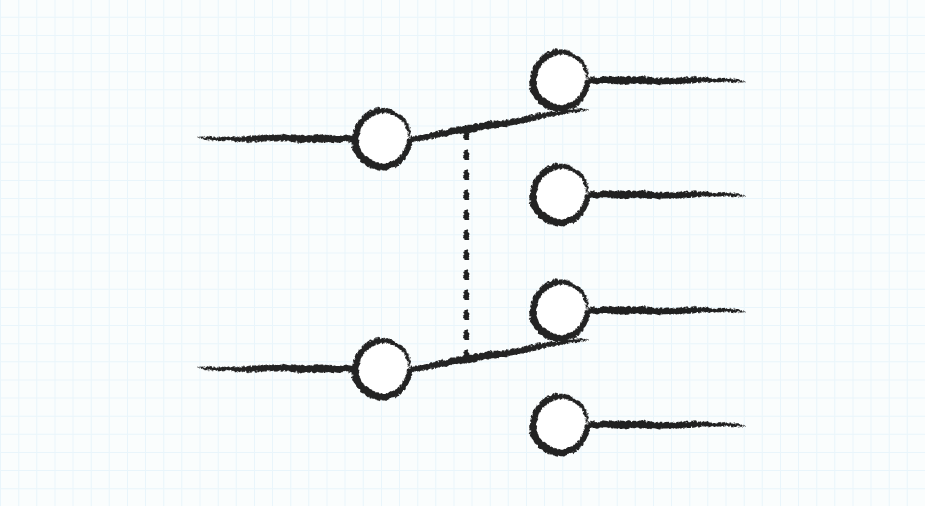
With a double pole, double throw, or DPDT switch, there are both two circuits that are controlled by this single switch and both switches have two contacts that they switch between. While SPST, SPDT, DPST and DPDT are the most common switch configurations found, there is no theoretical limit to how many poles and throws a switch has. To simplify matters, if there are more than two poles or throws, the acronyms use a number in place of the ‘S’ or ‘D’. For example, a switch that offers three poles and six throws will likely be advertised by its manufacturer as a 3P6T switch. A single pole with five throws could be indicated as SP5T. This nomenclature is extremely common and a solid understanding of both the terms and their representations will be crucial in selecting the ideal switch for an application.
Features to Consider for Switch Selection
In addition to the poles and throws of a switch, there are many features that distinguish between the different varieties produced by manufacturers. Below is an extensive but not all-inclusive list of common features to consider.
Size
As mentioned previously, there are switches barely large enough to see, smaller than a grain of rice or too large to move without a forklift. For a high-power industrial application, a large switch is not only necessary but preferred as it can be controlled with gloved hands or other situations where fine motion is not possible. However, small, embedded products are typically looking for the smallest reasonable size possible.
Default State
Most switches do not have a default position, but there are momentary switches that have a default state and will return to that default state as soon as the external force stops. These momentary switches can be normally open (NO) or normally closed (NC).
Positions
This determines how many switches are integrated into a single unit. This may occasionally be confused with throws, but positions indicate independent switches in the same unit that are actuated separately from each other.
Mounting Options
Switches offer the same range of mounting options as most electronic devices. With through-hole and surface mount, the switches are mounted on a PCB. With through-hole, a lead goes through the PCB and is soldered on the opposite side of the board, whereas surface mount devices sit on top of a pad and are soldered in place. The separation distance of the leads is called pitch and while important for both surface mount and through-hole switches, pitch is particularly important for through-hole as the proper pitch can make switches breadboard mountable. Other mounting options are panel mount, often on the front of an electrical box, or DIN rail, as well as several mounting variations for unique situations. There also tends to be a correlation between size and the mounting type, with smaller switches being found on PCBs while larger switches are panel mounted or DIN rail mounted.
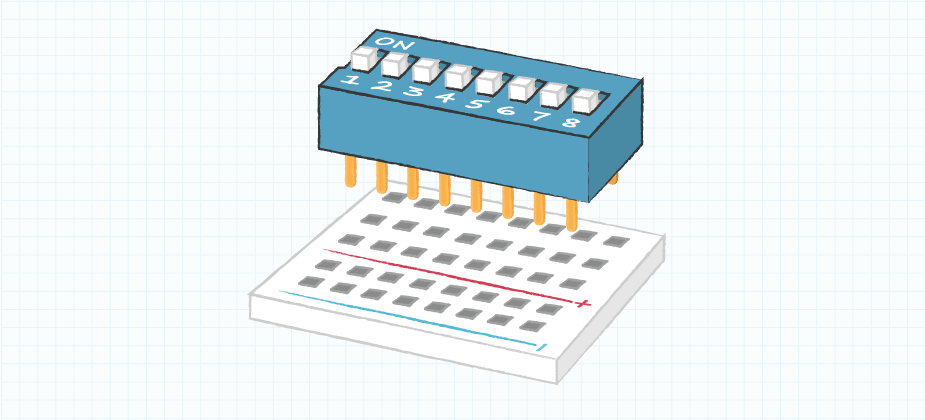
Actuation Options
Besides the difference between manual and electronic actuation, there are switches designed to be used with bulky gloves while others that require small screwdrivers or specialized tools. Among all the different actuation options, perhaps the most common decision to make will be choosing between a raised or flat actuator level.
Current and Voltage Rating
While some switches are rated for only a few volts and less than a tenth of an amp, others are rated for tens of thousands of volts and hundreds or thousands of amps. While current and voltage ratings are usually correlated, that is not necessarily always the case. The same design features that allow a switch to survive high currents are not the same features that allow a switch to survive high voltages. Always confirm that the switch can handle both the expected current and voltage ratings of the application.
Environmental Factors
In general, this refers to ingress protection or IP ratings, which indicate the ability to withstand dust or water infiltration. But it can also include protection from vibration or physical blows. There are vandal-proof or hardened switches that are designed specifically to operate even after direct attacks from users.
There are other features that may be specific for a particular line of switches or applications, but these attributes are found with all switches manufactured.
Common Mechanical Switches
While the variety may seem infinite, most switches fit under a handful of different types. The examples here are mechanically operated and actuated, while being found most frequently in, but not limited to smaller portable or embedded systems.
DIP Switches
DIP switches are an array of switches mounted into one through-hole or surface mount package. With through-hole mounting, these are commonly designed to fit into a breadboard but are usually small enough that they can easily be included in finished products. The array of switches usually consists of a series of SPST switches, where all switches can be used separately or in tandem to create a single number, with low voltage or low current signals. These switches are ideal for situations where users need to make semi-permanent selections but without the potential of losing jumper blocks. They come in a variety of shapes, mainly piano, slide, and rotary, of which rotary switches will be discussed in more depth below.
DIP switches are commonly used in applications where there are option settings on a device, such as a transmitter or receiver and are often found in industrial applications with the same usage. They are also popular on development kits for rerouting signals from a central microcontroller to different peripherals. They are easier to use than jumpers and have a greater variety of options but are still not designed for constant or frequent use. Despite this, they are easy to use when necessary. To learn more about DIP switches, read our DIP Switches 101 blog.
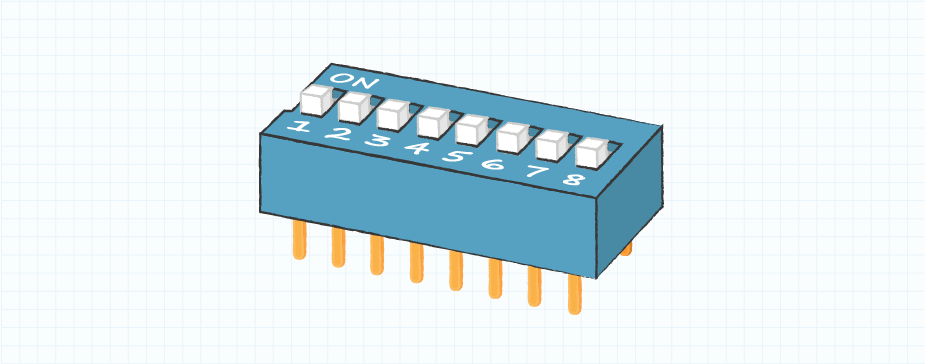
Rotary DIP Switches
Rotary DIP switches are a subset of DIP switches, using the form of a DIP switch but set up in a rotary selection format. This allows a user to select one of many different discrete options, usually between 4 and 16 positions. They can either be actuated with a small screwdriver or with fingers if there is a raised actuator knob. Like the linear DIP switches, they are either through-hole or surface mount, but unlike their linear counterparts, the outputs can either be in BCD or hex. They share many of the same benefits, with a small footprint and ease of use, but limits users to one output - for better or worse. They are also not designed for continuous use, with lifetime rotation counts in the tens of thousands versus the hundreds of thousands or millions other switches may offer.
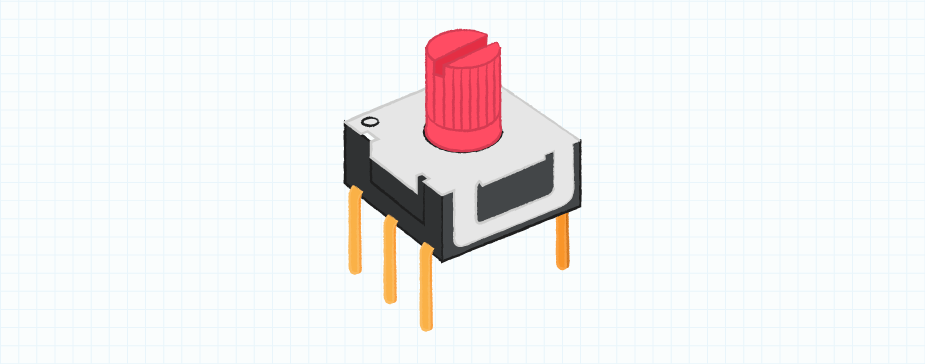
Slide Switches
Slide switches, as their name implies, are used by sliding the actuator in one direction or the other. When used as power switches, perhaps their most popular usage, these are often found in the SPST configuration. As such, they are usually rated for higher voltages and higher currents than DIP switches as well as for more frequent use. While they are commonly SPST, they can sometimes be available with multiple poles or throws. However, multiple throws can make it difficult to slide the switch to the desired location. While comparatively larger in their capacity than DIP switches, they are still relatively low power and most often surface or through-hole mounted onto PCBs. They are sometimes used as more readily accessible DIP switches in consumer electronics, but this application sometimes finds it difficult to balance ease of use and accidental actuation. To learn more about slide switches, read our Slide Switches 101 blog.
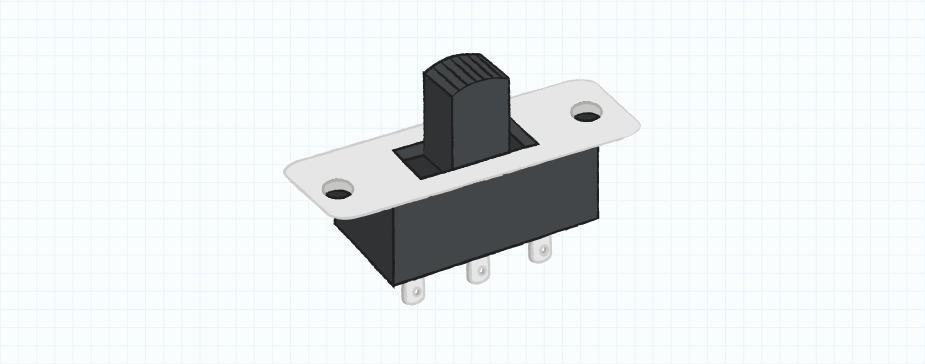
Tactile Switches
Tactile switches are buttons that have a click that can be felt, hence the name tactile switches, but the click is also usually heard. They are quite small and always momentary. Designed for low voltage, low current signals, they make up for their paltry electronic capabilities with physical toughness. Tactile switches are expected to have near continuous use with life cycles measured in the hundreds of thousands, millions, or even tens of millions of actuations. In addition to this, they can be easily sealed for a high IP rating. They are always mounted on a PCB but can be through-hole, surface mount, or edge mount. While they usually only have one pole, it is not uncommon for them to have multiple throws. Tactile switches are also extremely common, offering a wide variety of options in both features and manufacturers. Their ubiquity, small size, and toughness have made them very popular with consumer electronics like game controllers, remote controls, garage doors, and even in medical, automotive, or industrial applications that need a simple momentary switch for interfaces. To learn more about tactile switches, read our Tactile Switches 101 blog.
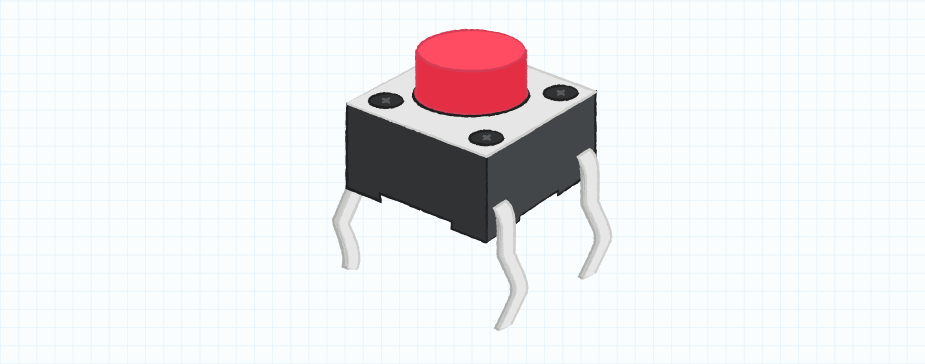
Rocker Switches
Rocker switches have a pivot in the middle, toggling between two options. These switches can be momentary but are typically not. They are frequently found operating as power switches for mains level circuits, as they are often rated for higher voltages and currents. Rocker switches can be panel mounted on the outside of a device or cabinet but can also be through-hole or surface mount. They are occasionally illuminated with an LED or, in older models, incandescent bulbs, which are often used to show the status of the switch in the on or off position. They can also be IP rated, allowing them to be used in harsher environments. Their easily understood interface and actuation is one of the main reasons they have been found so often in consumer electronics. While they tend to be slightly more expensive than many other switches in this field, it is mostly due to their larger size and additional features. Rocker switches can be found in industrial applications, often in conjunction with toggle switches, and at times have covers to prevent accidental actuation. These types of switches can also be found in vehicles to switch on and off different features, such as four-wheel drive.
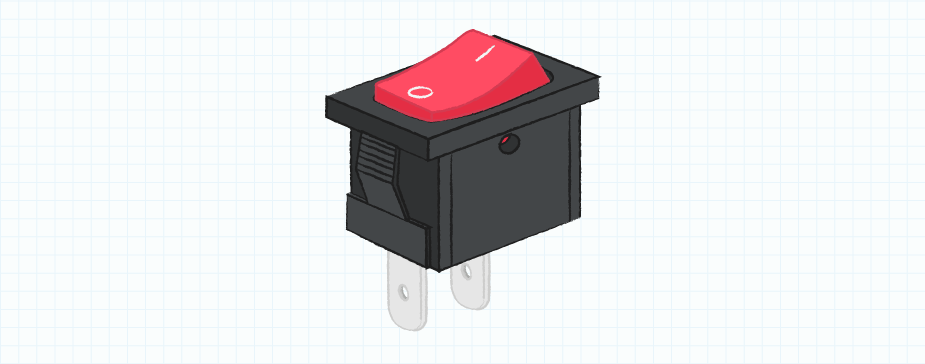
Push Button Switches
Push button switches are most often referred to simply as buttons. These are unique in that their actuation is in and out, versus the lateral or rotational movement seen with most other switches. They are usually round but sometimes square or rectangular and can be momentary. They are often found with LEDs to either illuminate them for ease of use or as indicators showing whether the switch is in the on or off state. These can handle a wide variety of power or signal level voltages and currents and are found most often as PCB or panel mount. Their ease of use makes them common in applications in public areas where the users are constantly changing, and a non-existent learning curve is needed. Push buttons can be made extremely rugged, with specific anti-vandal series created, and those features plus high IP ratings make them ideal for harsh environments like elevators or subways. Their size, LED options, and high-quality materials used for the anti-vandal series usually cause these to be considerably more expensive than other switches. Simpler, smaller push button switches that would be used in networking or for computer peripherals, audio, or other instrumentation would be less expensive. To learn more about push button switches, read our Push Button Switches 101 blog.
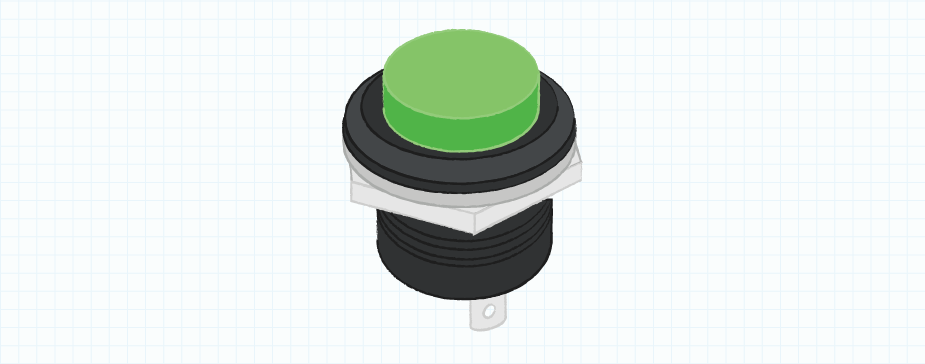
Toggle Switches
Toggle switches are known for their lever that extends away from its mounted position, making them ideal for situations when users are wearing gloves or fine motor movement is otherwise impaired. The prominent lever provides good visual feedback of the current state without an extra LED and the large movements ensure that there is no question whether a switch was toggled. These can be found in a large range of poles and throws, with many different variations. While they can occasionally be configured as a momentary switch, this is not as common. They can be PCB mounted with either vertical or horizontal options but are often found panel mounted. Their easy actuation, quick visual feedback, and ability to easily integrate safeguards make them ideal for industrial or scientific applications. However, they inherently stick out away from their mounting point which may make them less than ideal for vertically limited spaces. As they are designed for more mission critical applications, like aircraft, control instrumentation, and medical equipment, they tend to be more expensive as well.

Comparing Switch Options
There are an extraordinarily large array of switches and those discussed here are only a small subset of possibilities. However, this small subset is sufficient to cover many applications and their different strengths and weaknesses allow designers to find the ideal solution for their project.
For the switches discussed, below is a summary of their prominent features and typical configurations. There are exceptions to nearly all these generalizations, but this provides a rough idea of their capabilities:
| DIP | Rotary | Slide | Tactile | Rocker | Push Button | Toggle | |
|---|---|---|---|---|---|---|---|
| Poles/Throws | Multiple | Multiple | Single | Single | Single | Single | Single |
| Cost | Low | Low | Medium | Low | Medium | High | High |
| Longevity | Low | Low | Medium | High | Medium | Medium | Medium |
| Current/Voltage Ratings | Low | Low | Medium | Low | Medium | Medium | Medium |
| Mounting Options | PCB | PCB | PCB/Panel | PCB | PCB/Panel | PCB/Panel | Panel |
